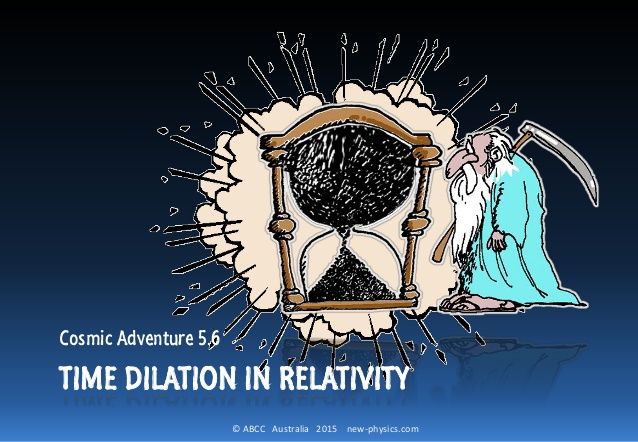Time Dilation and Relativity

Of all that we have known in physics, the Galilean laws, the Newtonian laws, the discovery of the speed of light along with many others govern the mind. In the eyes of Physics, in the 20th century physics the very concept of Relativity was a Renaissance.
Relativity can be said to be the single most influential physical theory till the 21st century for the way it has changed our view of the universe. Not that other discoveries in physics were less significant, but few of them have been so well received by the general public. Relativity has grabbed people’s imagination and sparked discussions in philosophy and religion which last until the present day. Quantum physics, although perhaps more pertinent to daily life, is a close second.
The notion of relativity is not as revolutionary as many believe. In fact, spatial relativity is part of our everyday experience. Spatial relativity is also called Galilean relativity in honour of Galileo who first formulated the concept of relative motion.
The pioneer of the special and general theory of relativity, Albert Einstein, opined that “Relativity teaches us the connection between the different descriptions of one and the same reality.” His Special Relativity is based only on two simple postulates:
- The laws of physics are the same in all inertial (non-accelerating) reference frames, and
- The speed of light in free space is constant.
A preeminent feature of General Relativity is its view of gravitation.
The notion of relativity is not as revolutionary as many believe. Infact, spatial relativity is part of our everyday experience. Spatial relativity is also called Galilean relativity in honour of Galileo who first formulated the concept of relative motion.
One of the most enthralling aspects of Relativity is its new understanding of time. If the speed of light is constant, time cannot be constant. Infact, it doesn’t make sense to speak of time as being constant or absolute, when we think of it as one dimension of spacetime. Special Relativity states that time is measured according to the relative velocity of the reference frame it is measured in. Despite of the simplicity of this statement, the relativistic connection between time and space are hard to imagine.
There are numerous ways to illustrate this:
The four dimensions of spacetime.
In Relativity the world has four dimensions: three space dimensions and one dimension that is not exactly time but related to time. In fact, it is time multiplied by the square root of -1. Say, you move through one space dimension from point A to point B. When you move to another space coordinate, you automatically cause your position on the time coordinate to change, even if you don’t notice. This causes time to elapse. Of course, you are always travelling through time, but when you travel through space you travel through time by less than you expect. We can consider the following example:
Time dilation; the twin paradox.
There are two twin brothers. On their twentieth birthday, one of the brothers goes on a space journey in a superfast rocket that travels at 99% of the speed of light. The space traveller stays on his journey for precisely one year, whereupon he returns to Earth on his 21st birthday. On Earth, however, seven years have elapsed, so his twin brother is 27 years old at the time of his arrival. This is due to the fact that time is stretched by factor 7 at approx. 99% of the speed of light, which means that in the space traveller’s reference frame, one year is equivalent to seven years on earth. Yet, time appears to have passed normally to both brothers, i.e. both still need five minutes to shave each morning in their respective reference frame.
The effect of time dilation is negligible for common speeds, such as that of a car or even a jet plane, but it increases dramatically when one gets close to the speed of light. Very close to c, time virtually stands still for the outside observer.
Time expands, space contracts.
Interestingly, while time expands from the perspective of the stationary observer, space contracts from the perspective of the moving observer. This phenomenon is known as Lorentz contraction.
Therefore, space travel is shortened with the velocity of the traveller. A journey to the 4.3 light-years distant Alpha Centauri C, the closest star to our Sun, would take only 7.4 months in a space ship moving at 0.99c. The effect of time dilation has been experimentally confirmed thanks to very precise caesium clocks that can measure extremely small periods of time. Unfortunately, time dilation is completely outside of human experience, because we have not yet devised a way of travelling at speeds where relativistic effects become noticeable.
[This article was contributed by Sunit Manjil Hazarika, a 2nd semester Integrated Masters student of the Department of Physics, Tezpur University, India.]
